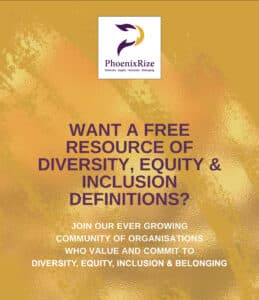The world of philanthropy is having its reckoning when it comes to equity, and the time couldn’t have come soon enough. Across the country, organizations are seeking to be more thoughtful about how they approach the communities they serve and take steps to embed equity into their work. But it takes more than talking a good game to bring good intentions to life. To make legitimate progress, we must move beyond words and into actions.
And that starts with how and who we hire.
It’s no secret that philanthropic organizations continue to be dominated by leaders who are largely white and male (although that is slowly changing). They are also predominantly led by individuals who have attended the right schools, followed similar career paths, and are developed and hired using the same criteria that were followed for their predecessors.
To create an equitable culture in philanthropy, we must do much more than consider gender and skin color when we make hiring decisions. Instead, we should also be working to ensure that we identify smart, committed people regardless of where they grew up or went to school—or who they know.
As a result, no matter how much we talk about making philanthropy more equitable, our efforts to recruit and train new leaders continue to reinforce a hegemony that is inconsistent with the values and backgrounds of a majority of our population.
When I work with organizations to identify and place diverse talent in leadership positions, I’m struck by just how often organizations have blind spots embedded into their processes that subconsciously prevent them from being truly equitable in their hiring. Because of the criteria many boards and leaders follow when they make hiring decisions, they automatically rule out qualified, diverse candidates. In turn, they end up hiring new leaders who look and sound a lot like the people who came before them.
Often, these blind spots aren’t deliberate. Board members and search committees might truly want to find qualified candidates of color, but because of their own notions of what makes a good hire, they come back to prioritizing candidates who “check all the right boxes” on their résumés.
How do we change that? It begins with rethinking where we look, what we prioritize, and how we screen our hires. Here are some established practices that are likely holding back your organization’s recruitment and leadership development practices.
Pitfall #1: Ignoring the Elephant in the Room
Candidates notice when they are being considered for a role at an organization where there is little diversity among its current ranks. We’ve led enough searches over the years to know that people are wary of joining an organizational culture in which they are clearly in the minority—and that walking into an interview room where they look different than the people across the table can add additional anxiety to a naturally stressful situation.
This is true for a woman who is being considered for a leadership role in an organization that has a largely-male executive team, a candidate of color who is meeting solely with white executives and board members, or an LGBTQ candidate who senses there are few, if any, allies in the room.
If your organization lacks diversity but is actively working to change that, it’s important to be up front about your deficiencies rather than ignoring the obvious truth. One way to do that is to address the issue head on by making a simple, direct statement: “We’ve put together a slate of people for you to interview. We know it’s not diverse. We’re not diverse. But part of the reason we’re talking to you is that we’re looking to involve you in improving that dynamic. If you join us, you can help us.”
When possible, recruit diverse members of your staff beyond your executive team to meet with the candidate—not as a show, but rather to provide the candidate with an opportunity to get a more informed read on what they can expect.
Pitfall #2: Not Casting Your Net Wide Enough
Diversity is about more than just checking the boxes when it comes to gender or race. It’s also about making sure organizations have diversity of perspective and experience. That means looking outside of a specific geographic region and ensuring we’re not inadvertently ruling out candidates because of their age or length of experience working in the field.
At a time when our ideologies are often framed by where we live, it’s important to look beyond our networks when we look to bring in new talent. If your organization uses the same hometown search consultant for all of its hires, consider hiring a firm from a different market to help tap into new pools of talent. Likewise, for organizations that operate on one of the two coasts, it’s helpful to consider candidates who hail from or who are currently working in middle America or the South. The reverse is also true.
Similarly, many organizations frame their searches through a generational lens. Many baby boomer board members are loath to embrace recruiting younger workers to play prominent roles in their organizations—or else they’re swinging too far in the other direction and passing over more seasoned candidates for important roles.

